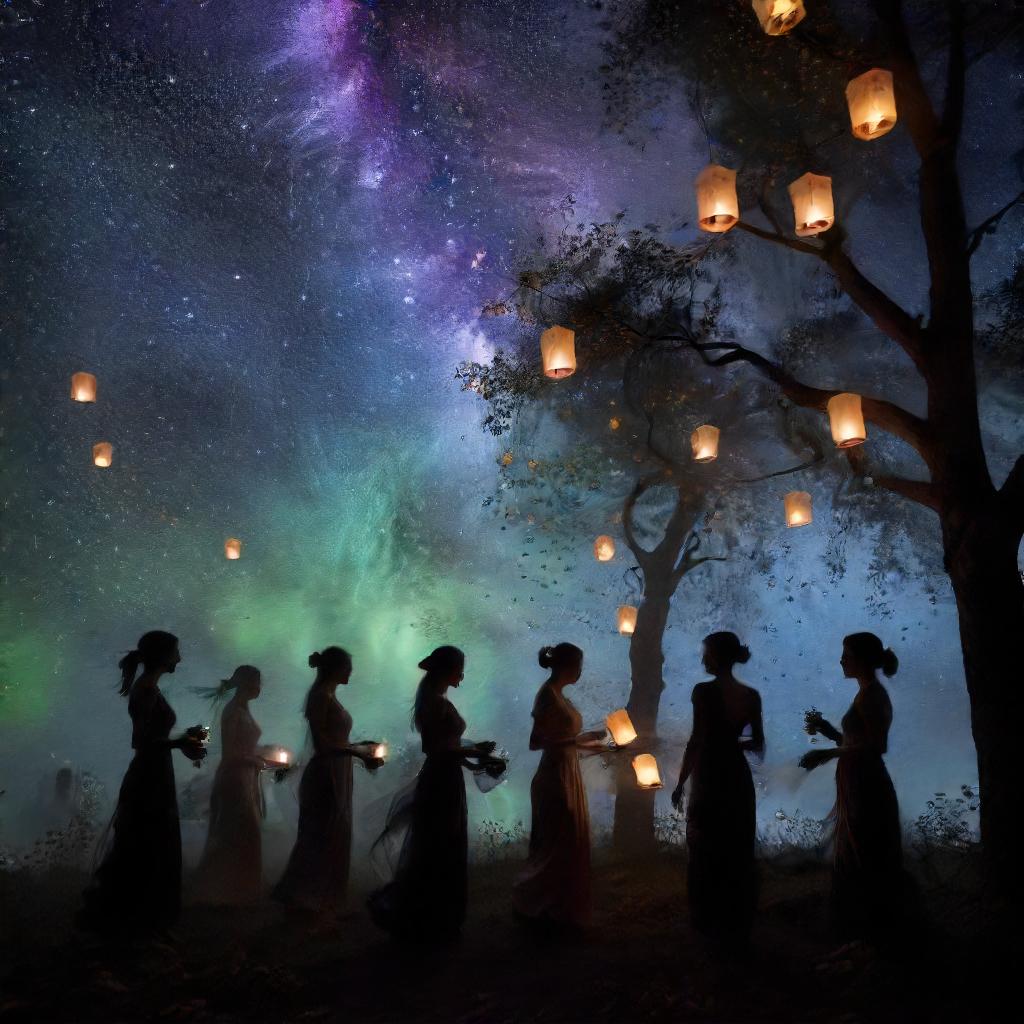Transformative ceremonies are rituals that have the power to change individuals and communities. These ceremonies are often rooted in cultural and spiritual traditions and are designed to bring about personal growth, healing, and transformation.
They can be used to mark significant life events, such as births, deaths, and marriages, or to help individuals overcome personal challenges and obstacles. Transformative ceremonies have been practiced for centuries and continue to be an important part of many cultures around the world.
In this article, we will probe the power of transformative ceremonies and their role in promoting personal and collective transformation.
Types of Transformative Ceremonies
In this section, we will probe the different types of transformative ceremonies that exist across cultures. These ceremonies are designed to mark significant life transitions, promote emotional and physical well-being, and connect individuals to their higher selves.
1. Rites of Passage
Rites of passage are ceremonies that symbolize the transition from one stage of life to another. These ceremonies play a crucial role in various cultures, helping individuals navigate important milestones and embrace new roles and responsibilities.
1.1. How do rites of passage mark significant life transitions?
Rites of passage serve as a way to acknowledge and celebrate important life transitions. They often involve rituals, symbolic actions, and communal celebrations, creating a sense of belonging and continuity within a community.
1.2. Examples of traditional rites of passage in different cultures
Traditional rites of passage can vary widely across cultures. For example, the Bar Mitzvah and Bat Mitzvah ceremonies in Judaism mark the coming of age for boys and girls, meanwhile the Quinceañera celebration in Latin American cultures celebrates a girl’s 15th birthday and her transition into womanhood.
2. Healing Ceremonies
Healing ceremonies are designed to promote emotional and physical well-being. These ceremonies often incorporate spiritual practices, such as prayer, meditation, and the use of medicinal herbs, to address physical ailments and restore balance to the mind, body, and spirit.
2.1. How can healing ceremonies promote emotional and physical well-being?
Healing ceremonies provide individuals with a space to address their emotional and physical needs. Through rituals and practices that focus on healing, individuals can release emotional traumas, find solace, and gain a sense of empowerment and renewal.
2.2. Different types of healing ceremonies around the world
Healing ceremonies can be found in various cultures and traditions. For example, the sweat lodge ceremony in Native American cultures involves participants sitting in a steam-filled lodge to cleanse their bodies and purify their spirits. Traditional Chinese medicine also incorporates healing ceremonies, such as acupuncture and herbal medicine, to restore balance and promote well-being.
3. Spiritual Ceremonies
Spiritual ceremonies are rituals and practices that connect individuals to their higher selves and the divine. These ceremonies often involve prayer, meditation, chanting, and other spiritual practices to cultivate a deeper sense of spirituality and connection.
3.1. How do spiritual ceremonies connect individuals to their higher selves?
Spiritual ceremonies provide individuals with a sacred space to navigate their spirituality and connect with their higher selves. Through these ceremonies, individuals can tap into their inner wisdom, find clarity, and experience a sense of transcendence beyond their everyday existence.
3.2. Traversing various spiritual ceremonies in different religions
Spiritual ceremonies can be found in various religions and belief systems around the world. For example, in Hinduism, the Aarti ceremony involves the offering of light to deities as a form of devotion, in the course of in Buddhism, meditation ceremonies are practiced to cultivate mindfulness and insight.
| Type of Ceremony | Significance |
|---|---|
| Rites of Passage | Rites of passage mark significant life transitions and help individuals embrace new roles and responsibilities. |
| Healing Ceremonies | Healing ceremonies promote emotional and physical well-being by acknowledging ailments and restoring balance. |
| Spiritual Ceremonies | Spiritual ceremonies connect individuals to their higher selves and provide a deeper sense of spirituality. |

Benefits of Transformative Ceremonies
1. Personal Growth and Self-Reflection
Transformative ceremonies provide a unique opportunity for individuals to commencement on a journey of personal growth. Through these ceremonies, individuals can navigate their inner selves and gain a deeper comprehending of their emotions, beliefs, and values. This self-reflection is a crucial step in the process of personal development and can lead to profound insights and transformative experiences.
1.1. How do transformative ceremonies facilitate personal growth?
Transformative ceremonies create a sacred space where individuals can connect with their inner wisdom and scrutinize their personal journey. By engaging in rituals, individuals can tap into their subconscious mind, allowing for self-discovery, healing, and personal transformation. These ceremonies often incorporate ancient practices, such as meditation, chanting, or energy healing, which can further elevate the personal growth experience.
1.2. The role of self-reflection in transformative ceremonies
Self-reflection is a fundamental aspect of transformative ceremonies. It allows individuals to examine their thoughts, emotions, and behaviors in a non-judgmental and introspective manner. Through self-reflection, individuals can gain clarity, identify patterns, and make conscious choices that align with their authentic selves. Transformative ceremonies provide a supportive environment for self-reflection, enabling individuals to foster personal growth and self-awareness.
2. Emotional Release and Healing
Transformative ceremonies have a profound impact on emotional release and healing. These ceremonies provide a safe and sacred space for individuals to express and release their suppressed emotions, traumas, and pain. By allowing these emotions to surface, individuals can begin the process of healing and transformation.
2.1. How can transformative ceremonies help individuals heal from emotional trauma?
Transformative ceremonies offer a therapeutic environment where individuals can confront and process their emotional trauma. Through rituals and practices, individuals can tap into their inner strength and resilience, allowing for deep healing and emotional integration. These ceremonies provide a supportive community and guidance from experienced facilitators, creating a nurturing space for individuals to heal from emotional wounds.
2.2. The power of catharsis in transformative ceremonies
Catharsis, the release of repressed emotions, is a powerful aspect of transformative ceremonies. These ceremonies provide individuals with a transformative experience, allowing them to release emotional baggage and find cathartic relief. The cathartic process can bring clarity, emotional freedom, and a sense of liberation, paving the way for profound healing and personal transformation.
Planning a Transformative Ceremony
1. Setting Intentions and Goals
In order to have a meaningful and transformative ceremony, it is crucial to set clear intentions. This involves defining the purpose and desired outcomes of the ceremony. Here are some steps to help you define your intentions:
- Reflect: Take some time to reflect on what you hope to achieve through the ceremony. Consider your personal growth, spiritual development, or any specific areas of your life that you wish to focus on.
- Visualize: Visualize the end result of the ceremony. Envision yourself experiencing the transformation and the positive impact it will have on your life.
- Write it down: Write down your intentions in a clear and concise manner. Use powerful and affirmative language to express your desires.
Setting achievable goals is also important to keep the ceremony focused and attainable. Here are some tips to help you set goals:
- Be specific: Clearly define what you want to accomplish during the ceremony. Break it down into smaller, actionable steps.
- Make it measurable: Set goals that can be measured or evaluated. This will help you track your progress and stay motivated.
- Set realistic expectations: Ensure that your goals are attainable within the given time frame and resources available to you.
2. Creating Sacred Space
Creating a sacred space for your transformative ceremony is essential for setting the right atmosphere and energy. Here are some reasons why it is important:
- Focus and intention: A sacred space provides a dedicated environment for you to focus your energy and intentions towards the ceremony.
- Energetic alignment: By creating a sacred space, you align yourself with the higher vibrations and energies that support transformation and spiritual growth.
Here are some tips to help you design a sacred space:
- Cleanse and purify: Clear the space of any negative or stagnant energies by smudging, using crystals, or playing soothing music.
- Decorate with intention: Choose items and symbols that hold personal significance and resonate with the energy you wish to cultivate during the ceremony.
- Create a focal point: Designate a central area or altar where you can place meaningful objects or representations of your intentions and goals.

Ritual Elements in Transformative Ceremonies
1. Symbolism and Metaphors
Symbols and metaphors play a crucial role in enhancing the transformative experience. They have the power to communicate complex emotions and ideas, allowing participants to connect on a deeper level. Through symbols and metaphors, individuals are able to pioneer their inner selves and gain profound insights.
1.1. How do symbols and metaphors intensify the transformative experience?
Symbols and metaphors serve as powerful tools in transformative ceremonies as they evoke emotions and stimulate the imagination. They provide a framework for individuals to understand and interpret their experiences, facilitating personal growth and self-reflection.
1.2. Examples of common symbols used in transformative ceremonies
- Fire: Represents purification and transformation
- Water: Symbolizes cleansing and renewal
- Butterfly: Signifies metamorphosis and personal transformation
- Labyrinth: Represents the journey towards self-discovery
2. Music and Sound
Music and sound play a significant role in creating a transformative atmosphere during ceremonies. They have the ability to evoke emotions, alter moods, and intensify the overall experience. The right choice of music can set the tone and facilitate the desired state of mind.
2.1. The role of music and sound in creating a transformative atmosphere
Music and sound create a conducive environment for transformation by establishing a sense of rhythm, harmony, and unity. They can help participants relax, focus their attention, and enter a state of heightened awareness. The vibrations and frequencies produced by music and sound can also have a profound impact on the energy flow within individuals.
2.2. Choosing appropriate music for different types of transformative ceremonies
The choice of music for transformative ceremonies depends on the specific intention and desired outcome. Soft, soothing melodies may be suitable for introspective ceremonies, meanwhile uplifting and energetic rhythms can be used to augment celebrations of personal growth. Integral to select music that resonates with the participants and aligns with the overall theme of the ceremony.
| Symbol | Meaning |
|---|---|
| Fire | Represents purification and transformation |
| Water | Symbolizes cleansing and renewal |
| Butterfly | Signifies metamorphosis and personal transformation |
| Labyrinth | Represents the journey towards self-discovery |

Facilitating a Transformative Ceremony
1. Roles and Responsibilities
- 1.1. Who should be involved in facilitating a transformative ceremony?
- Experienced guides or shamans who have a deep discerning of the ceremony’s purpose and can lead participants through the process.
- Supportive assistants who can provide emotional and physical support to participants during the ceremony.
- Trained therapists or counselors who can offer guidance and help participants navigate any challenging experiences that may arise.
- 1.2. The importance of trained facilitators in ensuring a successful ceremony
- 2.1. Ensuring a safe and respectful environment for participants
- Establishing clear boundaries and guidelines for participants to ensure their physical and emotional safety.
- Providing a confidential space where participants can freely express themselves without fear of judgment or discrimination.
- Ensuring that all participants have given informed consent and are aware of the potential risks and benefits of the ceremony.
- 2.2. Addressing cultural appropriation concerns in transformative ceremonies
- Engaging in open and honest dialogue with indigenous or traditional communities, seeking their input and permission when assimilating elements of their ceremonies.
- Avoiding the commodification or commercialization of sacred practices, and recognizing the importance of preserving their cultural integrity.
- Being mindful of cultural appropriation and ensuring that the ceremony does not misrepresent or exploit indigenous or traditional beliefs and practices.
In order to ensure a successful transformative ceremony, essential to have a team of individuals with specific roles and responsibilities. These may include:
Having trained facilitators is crucial for the safety and effectiveness of a transformative ceremony. These facilitators have undergone extensive training and have a deep comprehending of the ceremony’s protocols, potential risks, and how to create a supportive environment for participants. They can guide participants through the process, offer emotional support, and help ensure that the ceremony is conducted in a respectful and ethical manner.
2. Ethical Considerations
Creating a safe and respectful environment is of utmost importance in transformative ceremonies. This includes:
Transformative ceremonies often draw inspiration from indigenous or traditional practices. It is essential to approach these practices with respect and cultural sensitivity. Some considerations include:
Read More:
1. Art of the Soul: Expressive Explorations in Shamanic Practice
2. Crystal Harmonies: Healing Insights with Shamanic Crystals